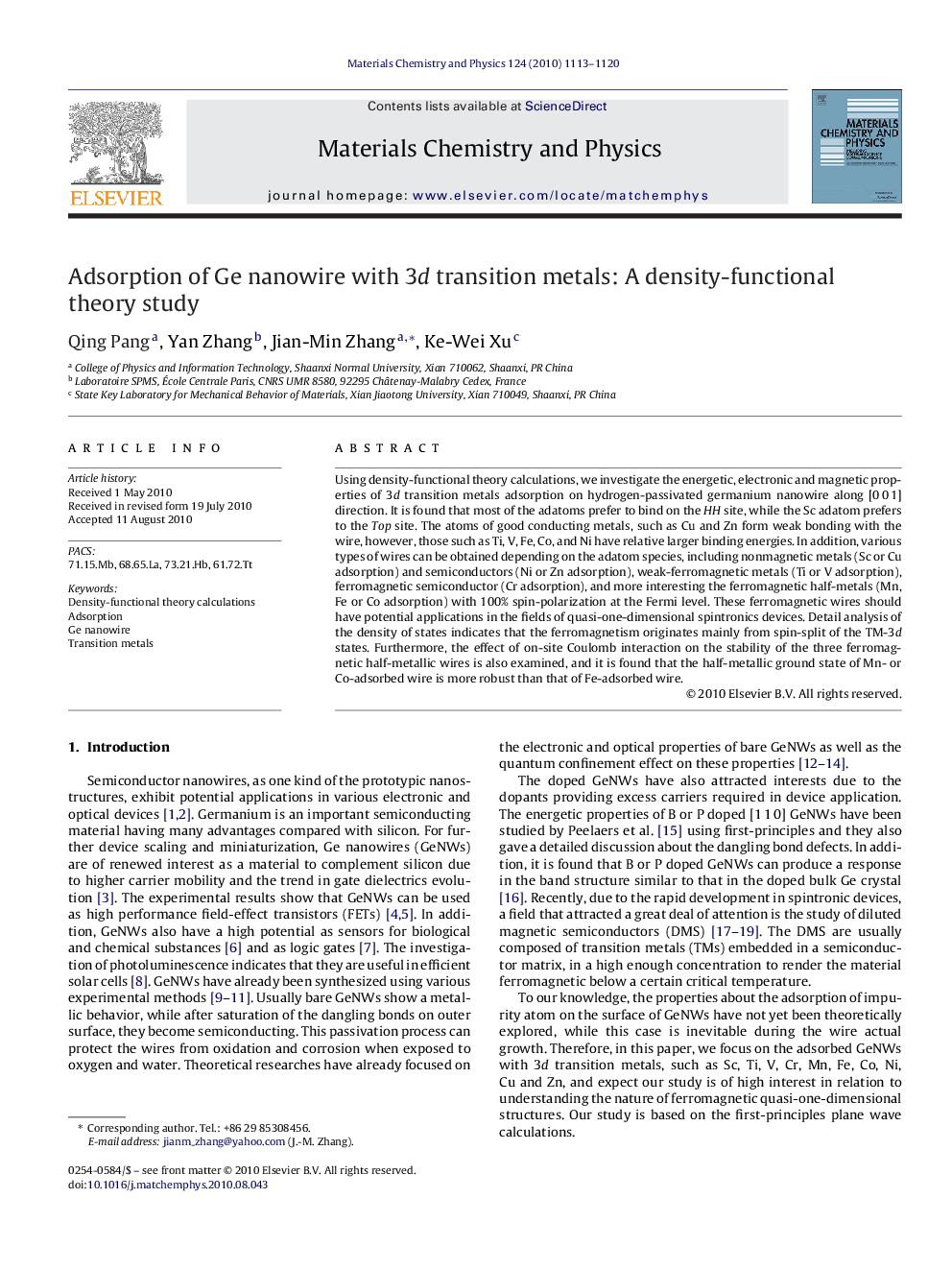| کد مقاله | کد نشریه | سال انتشار | مقاله انگلیسی | نسخه تمام متن |
|---|---|---|---|---|
| 1524454 | 1511837 | 2010 | 8 صفحه PDF | دانلود رایگان |
عنوان انگلیسی مقاله ISI
Adsorption of Ge nanowire with 3d transition metals: A density-functional theory study
دانلود مقاله + سفارش ترجمه
دانلود مقاله ISI انگلیسی
رایگان برای ایرانیان
کلمات کلیدی
موضوعات مرتبط
مهندسی و علوم پایه
مهندسی مواد
مواد الکترونیکی، نوری و مغناطیسی
پیش نمایش صفحه اول مقاله

چکیده انگلیسی
Using density-functional theory calculations, we investigate the energetic, electronic and magnetic properties of 3d transition metals adsorption on hydrogen-passivated germanium nanowire along [0Â 0Â 1] direction. It is found that most of the adatoms prefer to bind on the HH site, while the Sc adatom prefers to the Top site. The atoms of good conducting metals, such as Cu and Zn form weak bonding with the wire, however, those such as Ti, V, Fe, Co, and Ni have relative larger binding energies. In addition, various types of wires can be obtained depending on the adatom species, including nonmagnetic metals (Sc or Cu adsorption) and semiconductors (Ni or Zn adsorption), weak-ferromagnetic metals (Ti or V adsorption), ferromagnetic semiconductor (Cr adsorption), and more interesting the ferromagnetic half-metals (Mn, Fe or Co adsorption) with 100% spin-polarization at the Fermi level. These ferromagnetic wires should have potential applications in the fields of quasi-one-dimensional spintronics devices. Detail analysis of the density of states indicates that the ferromagnetism originates mainly from spin-split of the TM-3d states. Furthermore, the effect of on-site Coulomb interaction on the stability of the three ferromagnetic half-metallic wires is also examined, and it is found that the half-metallic ground state of Mn- or Co-adsorbed wire is more robust than that of Fe-adsorbed wire.
ناشر
Database: Elsevier - ScienceDirect (ساینس دایرکت)
Journal: Materials Chemistry and Physics - Volume 124, Issues 2â3, 1 December 2010, Pages 1113-1120
Journal: Materials Chemistry and Physics - Volume 124, Issues 2â3, 1 December 2010, Pages 1113-1120
نویسندگان
Qing Pang, Yan Zhang, Jian-Min Zhang, Ke-Wei Xu,